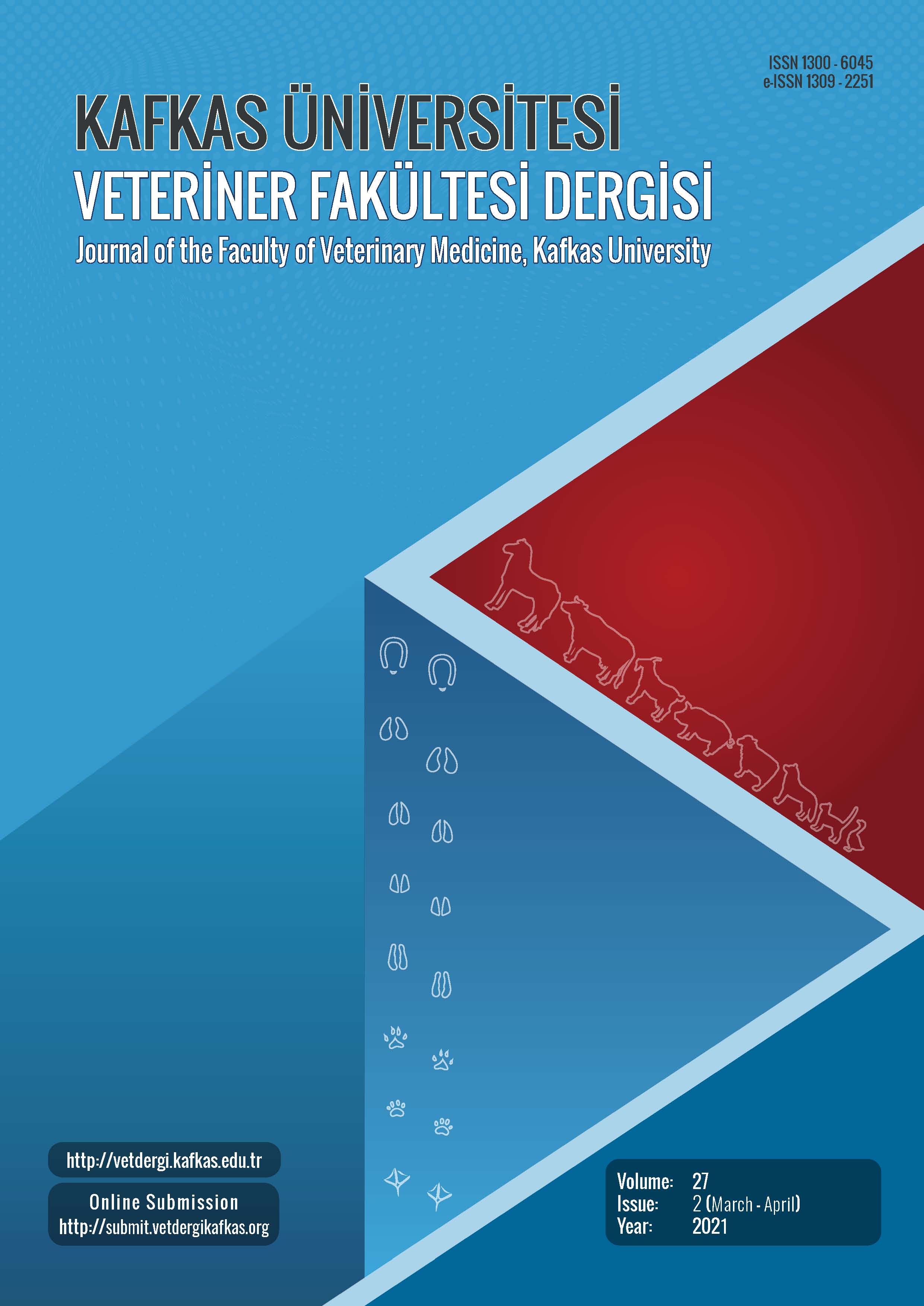
This journal is licensed under a Creative Commons Attribution-NonCommercial 4.0 International License
Kafkas Üniversitesi Veteriner Fakültesi Dergisi
Early View
Seroprevalence and Assessment of Risk Factors Associated to Borrelia burgdorferi Infection in Egyptian Horses
1Department of Clinical Microbiology and Immunology, Faculty of Medicine, King AbdulAziz University, Jeddah, SAUDI ARABIA2Special Infectious Agents Unit, King Fahad Medical Research Center, King AbdulAziz University, Jeddah, SAUDI ARABIA
3Department of Clinical Sciences, College of Veterinary Medicine, King Faisal University, Al-Ahsa 31982, SAUDI ARABIA
4Department of Surgery, Faculty of Veterinary Medicine, Kafr El Sheikh University, Kafr El Sheikh, EGYPT
5Department of Medical Laboratory Sciences, Faculty of Applied Medical Sciences, King Abdulaziz University, Jeddah, SAUDI ARABIA
6Department of Medicine and Infectious Diseases, Faculty of Veterinary Medicine, Cairo University, Cairo, EGYPT
7Department of Chemistry, College of Science, King Faisal University, Al-Ahsa 31982, SAUDI ARABIA
8Department of Chemistry, Faculty of Science, Sohag University, Sohag 82524, EGYPT
9Department of Animal Medicine (Infectious Diseases), Faculty of Veterinary Medicine, Benha University, Toukh 13736, EGYPT DOI : 10.9775/kvfd.2023.31264 Borrelia burgdorferi sensu lato can infect horses. However, the extent to which Egyptian horses get infected and seroconvert owing to this pathogen is unclear. Thus, this study aimed to determine the seroprevalence of B. burgdorferi and estimate its associated risk factors. A total of 385 serum samples collected from asymptomatic horses reared in three governorates in Egypt were screened using a commercial IDEXX SNAP 4Dx Plus kit. The results revealed that 58 (15.1%) out of 385 horses had antibodies against B. burgdorferi with Giza governorate showing the highest prevalence rate (30/130; 23.1%). According to univariate logistic regression analysis, locality, age, breed of examined horses and application of hygienic measures in house were significantly associated with B. burgdorferi infection. Furthermore, the multivariate logistic regression study revealed that thoroughbred horses older than four years old and raised in Giza governorate under unsanitary conditions, were more likely to be infected with B. burgdorferi than others. The serological evidence of B. burgdorferi in Egyptian horses and assessment of the risk factors associated with infection, necessitate wide range screening of this disease in other areas as well for efficient diagnosis and control. Keywords : Borrelia burgdorferi; SNAP test; Risk factors; Horses; Egypt










